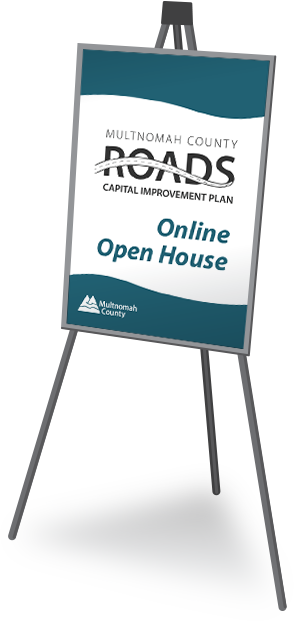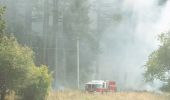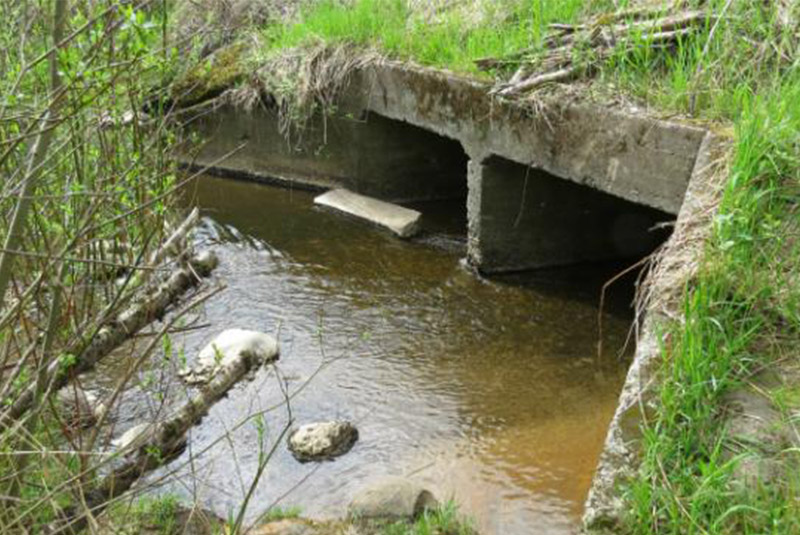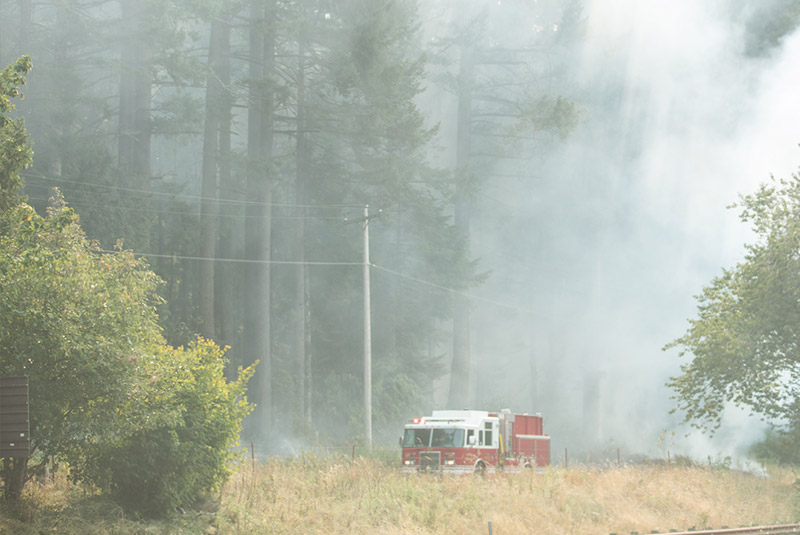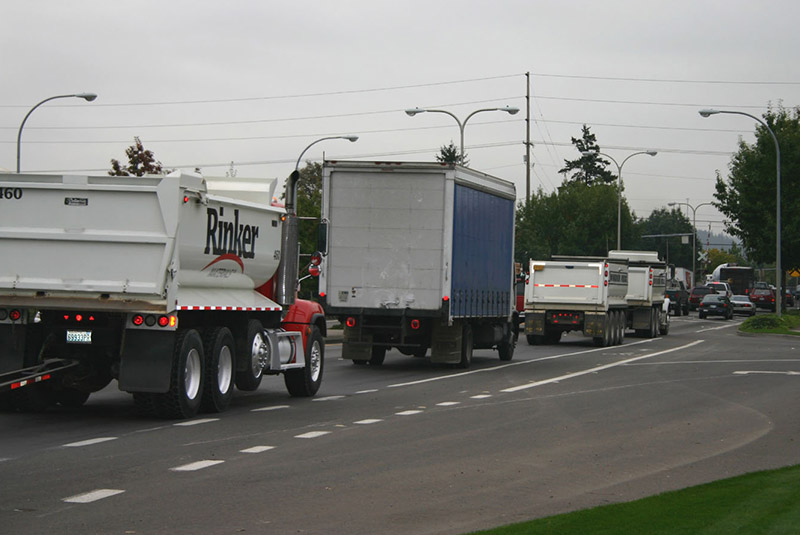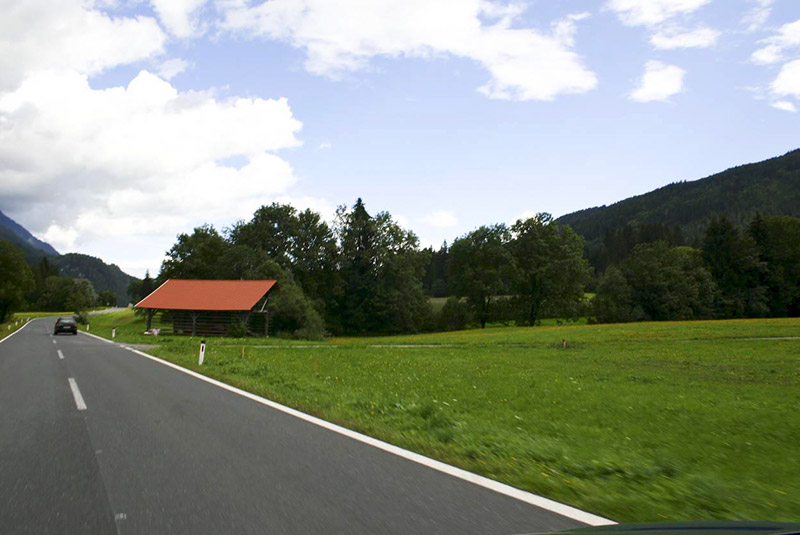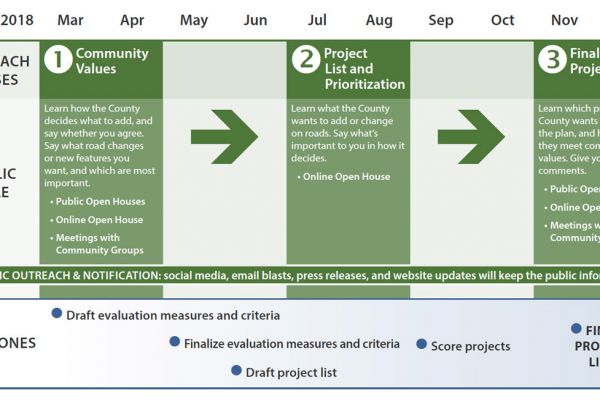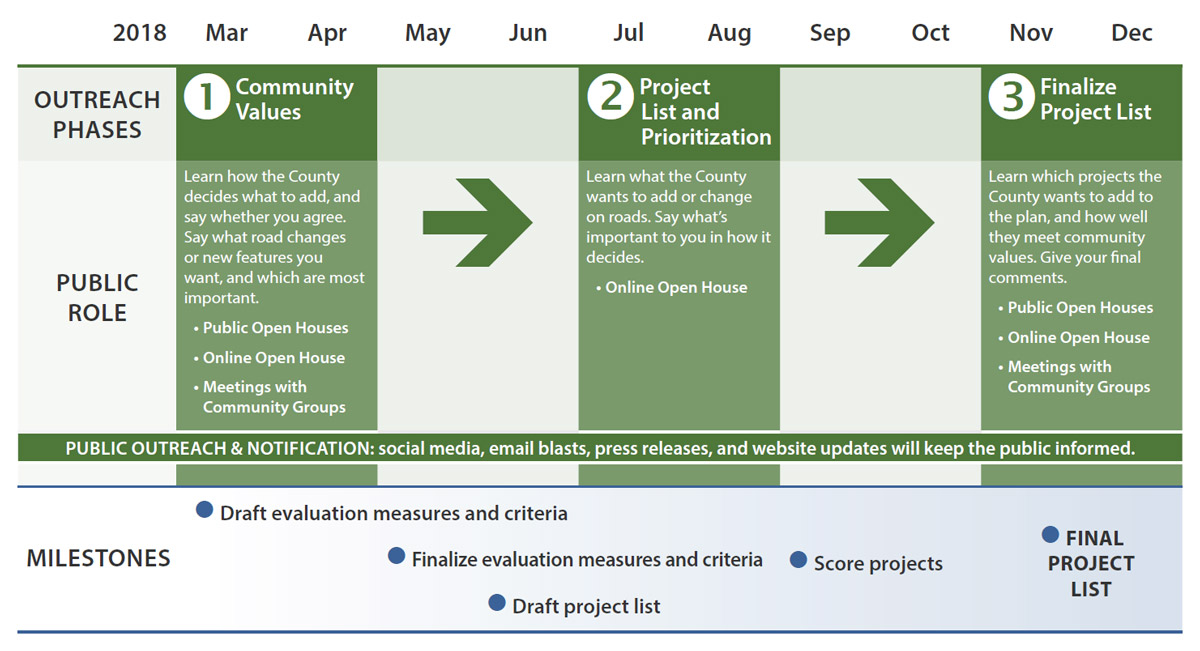Project Information
- Fact Sheet (PDF, 842kb)
Stations
Go directly to a station using the buttons below, or at the top of the screen to move through the stations in order.
= Page includes questions or opportunities for comment.
The plan will:
- Help the County know how much money (capital) is needed for roads and how to get the most from it.
- Lay out which road improvements to make, and in what order.
Why update it now?
For the first time in more than a decade, the County is digging in to understand its roads. That’s crucial because:
- Many more people live here now than 10 or 20 years ago, and more get around without a car.
- Landslides and floods from extreme weather affect County roads more often, especially in rural areas.
- With better tools than ever for collecting data, we can make a truly in-depth plan.
What information goes into the plan?
Along with your input today and through the summer, the County is gathering two types of information to help shape the plan:
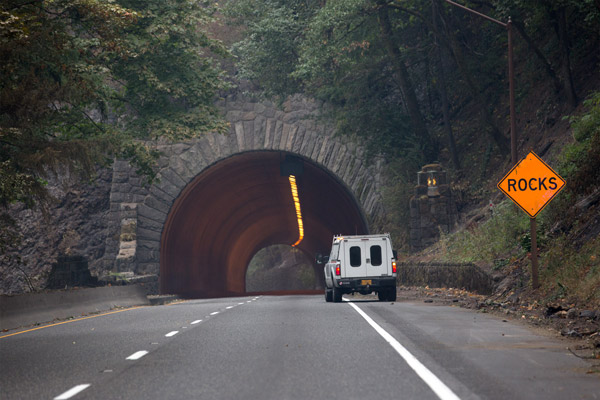
What's on or near a road
- Lanes: how many and how wide
- Shoulder type and width
- Pavement condition
- Posted speed limits
- The plan will also include an inventory of: traffic signals and signs; crosswalks, sidewalks and ramps; driveways; bus stops; striping; storm pipes and culverts; guardrails; bike facilities; and on-street parking.
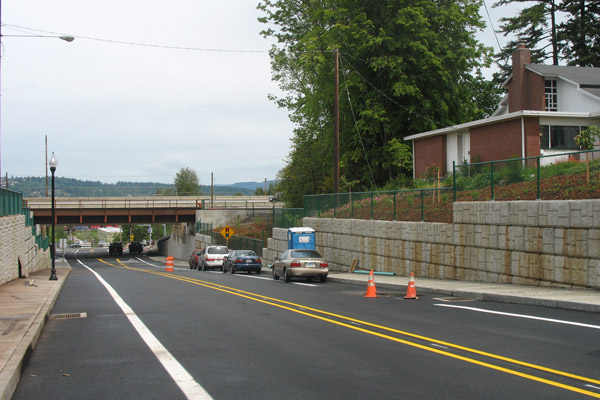
What happens on or near a road
- Average daily traffic
- Collisions and crashes
- Soil stability and slides
- Emergency response
- Description of who lives and works nearby
- Function (such as arterial, collector or local road)
Questions
Six criteria
The goals became a set of six criteria. The County will use these six criteria to give a “score” to each project considered for the plan. Projects with higher scores could move forward in the plan because they meet the goals of the County and its residents. The County will plan to build projects sooner when they have a higher score.
Safety
Sample evaluation questions:
- Would the project address existing safety problems?
- How would the project affect bicycle and pedestrian safety?
- How would it affect emergency management?
- How would the project address the most frequent types of collisions?
Mobility
Sample evaluation questions:
- Would the project help people connect from one kind of transportation to another — and which kinds?
- Would it give people new routes to get where they need to go?
- Would it help keep people from being stuck in traffic?
- Would it help people get to where they work or shop, or to transport what they buy or sell?
Equity
Sample evaluation questions:
- Would the project help people meet economic, social, geographic and physical challenges?
- Would it help more people, including historically marginalized communities, use more kinds of transportation?
Sustainability
Sample evaluation questions:
- How would the project affect the environment?
- How does the project respond to the changing climate (floods, hotter weather events)?
- Would the project promote economic vitality through access to and transport of jobs/goods?
- Would it improve how communities would recover from a natural disaster?
Asset Management
Sample evaluation questions:
- What are the current conditions that the project would change?
- How long is the expected life span of what the project builds or adds?
- Would its benefits be worth the time, effort and money it would cost?
Cost
Sample evaluation questions:
- How much would the project cost to design and build?
- How much would it cost to maintain?
- Are there opportunities to combine the project with another to save money?
Questions
Should we consider these topics when selecting projects for the Plan?
Safety
(Check one.)Mobility
(Check one.)Equity
(Check one.)Sustainability
(Check one.)Asset Management
(Check one.)Cost
(Check one.)Are these the right criteria?
Are any criteria missing? What should we be thinking about as we finalize the list? Are there other evaluation questions we need to ask?
characters remaining.
Read other comments...
Projects included in the RCIP could include:
- Widening roads for more lanes (lanes to travel in, or turn lanes)
- Widening shoulders for people walking and biking
- Adding signals or other projects to make intersections easier and safer
- Guardrails
- Multi-use paths
- Culvert replacements
- Bridge improvements
What’s not included:
- Maintaining roads, such as filling potholes or minor resurfacing
- Improvements to bridges over the Willamette River (they have a separate plan)
Only County roads can be included in the plan.
County-maintained roads are found mainly in three areas:
- Rural parts of east and west Multnomah County
- Larger roads (called collectors and arterials) in and near Fairview, Troutdale, and Wood Village
- Urban pockets within the County but outside cities such as Portland and Gresham
Review the proposed projects
Review the interactive map on this page. Help identify problem spots or locations with priority projects.
Comments placed by other users:
Safety issues | Traffic issues | ||
Walking concerns | Biking concerns | ||
Environmental concerns | Important projects |
Comment Map
Below is a map of projects that could potentially be included in the RCIP. These projects have been identified as important in various local transportation system plans. We want to know what you think about these projects. Use the map commenting features to identify problem spots, give us feedback on specific projects, or provide any other comments.
INSTRUCTIONS: Click the "Add Comment" button to show options for placing a comment on the map. (At smaller screen sizes, click "Map Options" to show the comment button.) Once submitted, your comment will appear with an icon. To read other comments, just click the icons on the map. Click "Reset" to re-center the map.
Can't see the map? Click here to reload. Project descriptions and details are for planning purposes and may change based on outcomes of the RCIP process. View a PDF list of the potential projects.
Questions
Questions
What is most important to consider in planning and building County roads?
Process
Outreach phases and public roleUpcoming work
Phase 1, March and April 2018: Community Values
We are here. Learn how the County decides what road projects to add, and say whether you agree. Say what road changes or new features you want, and which are most important.
- The County will draft, then adjust what it measures and scores in considering road changes.
- The County will draft a list of road changes to consider.
Phase 2, July and August 2018: Project List
Learn what the County wants to add or change on roads. Say what’s important to you in how the County decides.
- The County will measure and score items on its list of what to add or change on roads.
Phase 3, November and December 2018: Final Project List
Learn which specific road projects the County wants to add to the improvement plan, and weigh how well they meet community values. Give your final comments.
- The County will make final adjustments to its list of what to add or change on roads.
Stay Involved
- Visit the project website at multco.us/CIPP
- Sign up for email updates below
- Contact Jessica Berry at Multnomah County: road_cipp@multco.us.

